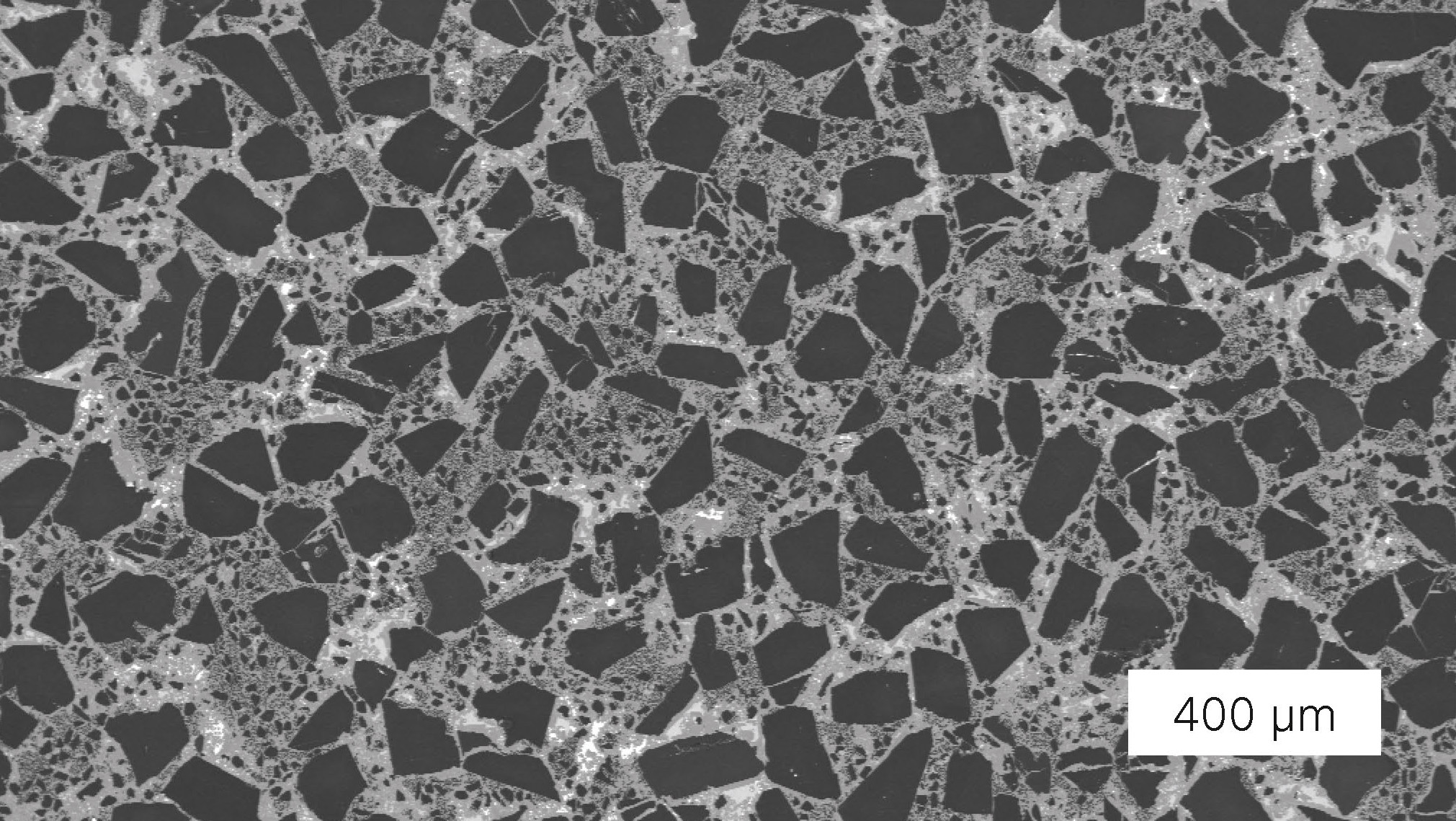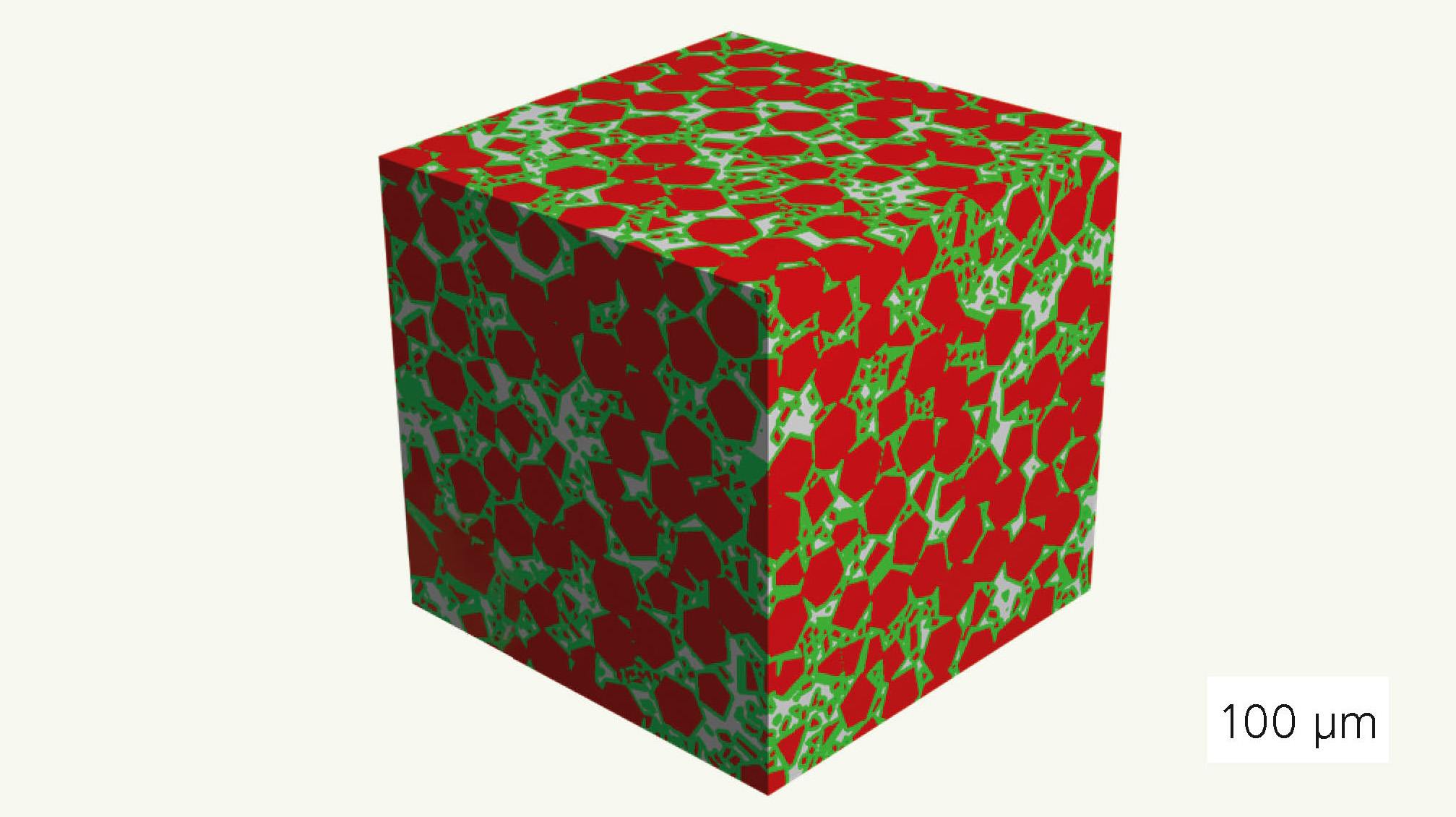
Simulating the thermal properties of diamond-SiC composites
Current research



Diamond has the highest hardness and thermal conductivity of all materials. Materials with a high diamond content therefore have a high application potential for components for cooling power electronics, lasers or in process cooling. The silicon carbide-bonded diamond material developed at Fraunhofer IKTS combines excellent thermal properties with the possibility of manufacturing complex components. Since the microstructure of the material can be composed very variably, especially with regard to the grain size distribution of the diamond phase, the correlations between the maximum diamond grain sizes and thermal conductivity have so far been the best-known factor. However, many complex and costly process steps are required to optimize the material to achieve the optimum grain composition. New methods of virtual material design using targeted microstructure simulation can simplify this process.
Virtual material design
For the artificial generation of diamond-Si-SiC structures, a workflow has been developed that combines both commercial and open-source software. The synthetically generated basic geometric structure models can be flexibly exported to a variety of other modeling tools via dedicated import/export filters for further processing and physical analysis. The established workflow allows to generate synthetic structure models with realistic morphology and specific, variable volume fractions of diamond, Si and SiC. The predicted thermal conductivity shows good agreement with the measured structures [1].
Based on this work using diamond-SiC as an example, further 3D structure modeling and analysis can be performed for a variety of other materials, such as hardmetals and other conventional ceramic materials. In addition to thermal behavior, other physical features, such as elastic and electrical properties, can also be simulated. In the future, the goal is to use simulation-based synthetic structure analysis methods to derive customized material structures according to predefined property specifications.
Services and cooperation offered
- Analysis of the microstructure of ceramic materials
- Generation of synthetic model microstructures with realistic morphology
- Measurement, simulation and correlation of a variety of physical properties
Literature
[1] Matthey, B., Kunze, S., Kaiser, A., & Herrmann, M. (2023). Thermal properties of SiC-bonded diamond materials produced by liquid silicon infiltration. Open Ceramics, 100386.